Every nine and a half years, I'm unable to leave the country for a few weeks because I've sent my passport off to be renewed. I just did that today. Not that I'm planning to flee into exile this month or anything, but still I hate not having the document. Right now the Department of State estimates 4 to 6 weeks to renew it. I guess I'll hang out here until September.
Still, it boggles my mind that only 28% of U.S. citizens have passports. That's far fewer than any other OECD country, though other rich countries have higher rates because they're surrounded by other countries.
I'm also getting extra pages right from the start. I hope to fill them before 2020.
Via Sullivan, Timothy Lee describes how freeway construction destroyed the center of St. Louis:
Planners in St. Louis, as in most American cities, decided that the new expressways would run directly through the cities’ downtowns. One of them (I-44/I-70) now runs North to South between the park and downtown. Not surprisingly, if you visit the park today you’ll find a light sprinkling of tourists, but nothing like the throngs of locals you’ll find in successful urban parks like New York’s Union Square, Philadelphia’s Rittenhouse Square, or DC’s Dupont Circle. Whatever “revitalizing” effects the park might have had on the rest of the city were undermined by the fact that the park isn’t really accessible to pedestrians in the rest of the city.
Planners pursued the same basic scheme in other American cities. And in almost every case, they encountered fierce resistance from people already living where the freeways were supposed to go. [Author Jane] Jacobs herself was a key player in the famous, and ultimately successful, effort to stop a proposed freeway through lower Manhattan. After decades of bitter conflict, similar plans were defeated in Washington, DC. Urbanists were partially successful in Philadelphia. They killed the Crosstown expressway, which would have cut through South Philly, but they failed to stop the Vine Street Expressway, which ran north of downtown and contributed to the destruction of Philly’s Chinatown.
In Chicago, the Eisenhower and U of I combined to destroy Little Italy; and the Dan Ryan sliced right through the principal middle-class black community, scattering black professionals to the winds.
In the past seven calendar days[1], I have worked 40.3 hours[2], traveled 39.8 hours through four countries and six states, and, so far as I can tell, slept for about 40 hours. I am not sure what happened in the remaining few minutes, though part of it included walking Parker and part of it included staring into space dazedly. Fortunately traveling wasn't entirely wasted time, including as it did four episodes of This American Life and two complete novels.
This is all a long way of saying I apologize for the reduced velocity of The Daily Parker, and I expect to resume my usual average of 1½ posts per day in short order.
N.B.: Don't ask how I know all this. I will say only that sitting in a car, train, bus, or airplane for more than 40 hours in one week gives one a lot of time to think about irrelevant crap.
[1] Since 17:30 CDT last Sunday.
[2] Plus another 4.4 hours commuting to and from my client site.
Back in February, some of us got the opportunity to tour Indira Gandhi Airport Terminal 3, then under construction. It opened this week:
The new terminal—Terminal 3—was "inaugurated" on July 3rd (Saturday) with India's great and good in attendance, and flights will start from July 14th. Mumbai’s airport is also getting a new terminal, but I don’t think it’s nearly as far along as Delhi’s, which needed completing before the Commonwealth Games this October. There is much excitement in the Indian media about the scale of the thing. Nobody seems able to decide whether it will be the world’s third-, fifth-, or eighth-biggest airport terminal. But it seems pretty certain that it will be a vast improvement over what came before (that’s a low bar, I suppose). Perhaps readers can help resolve this issue: in terms of floor area, which are the world's biggest airport terminals, and how big are they? (The most reliable stuff I've seen puts Delhi T3 in roughly the same ballpark as Madrid's T4, the Mexico City airport, Bangkok's Suvarnabhumi, and a couple of others—around 500,000 square meters—and about half the size of Beijing's new terminal, and a third that of Dubai's).
Of course, however spiffy the building, there is always scope for Heathrow T5-style shenanigans with baggage and so on to mess things up. I’m curious, therefore, to hear from any readers travelling through Delhi after July 15th. Do let us know how you found the new terminal. I myself won’t be passing through until mid-October. I am timing my annual visit home until after the Commonwealth-Games madness, such as it is, is over. By then, teething troubles will hopefully have been sorted out.
Only a couple blocks from the hotel:
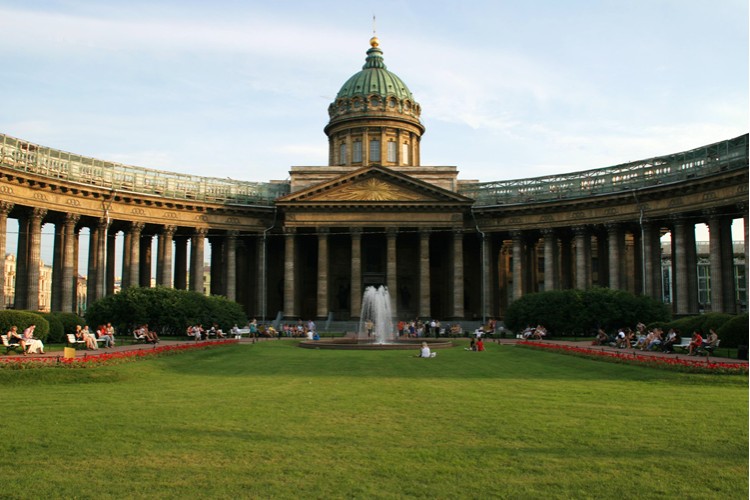
I've got KML files of the boat tour and walk from which I took some of the photos posted already in the blog. Of course, as GPS receivers are illegal in Russia, I spent a lot of time meticulously figuring out the coordinate pairs in these files, including the zig-zag lines that perfectly simulate the distorted readings someone would get walking in a heavily-urbanized area.
I love that for €54 and an hour and a half (round-trip, both numbers), you can take a boat from Finaland across the Baltic Sea and be in Estonia. The abandoned immigration and customs counters look a little forlorn to me, but have got to look completely eerie to anyone who made the trip before 2008, when Estonia entered the Schengen area.
The ferry terminal on the Estonian side is a ghastly pile of Soviet concrete too horrible for me even to photograph. To give you an example, this is directly across from the terminal, and is one of the first things you see entering Tallinn:
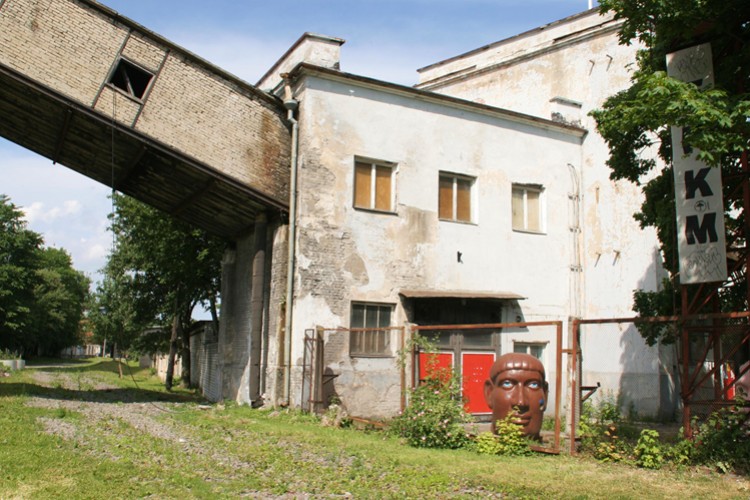
Fortunately, it gets better. The Soviets seem to have left Old Tallinn alone, so there is still a good-sized hunk of the city that looks like this:
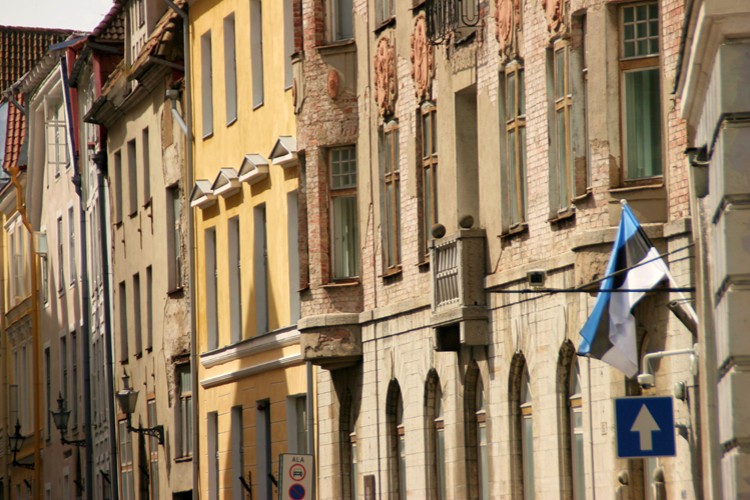
Then there's this, a door you never, never wanted to enter if you were Estonian during the Cold War:
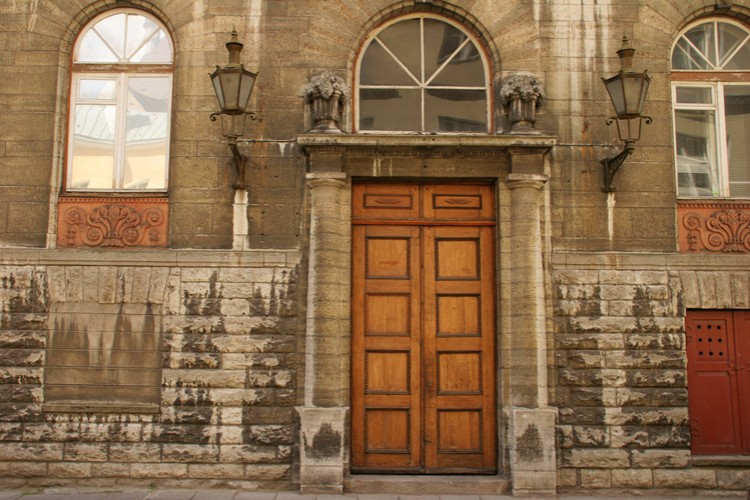
That building, at #1 Pagari, was at one point the KGB's headquarters. It seems to have been repurposed, which I deduce from my ability to photograph it repeatedly and not disappear.
Beautiful day, though. The temperature hovered around 22°C, the sun came and went, and the sea breeze off the Baltic felt great. I'm glad the weather held.
One more thing. As the return ferry approached Helsinki, I thought about the original settlers of the two cities, living a thousand years ago, rowing their longboats across. The catamaran I took cruised at 64 km/h, about ten times faster than the fastest longboat ever could have made the journey. We had about 15 minutes from the time I first sighted Finland until we were close enough to the archipelago to have waded ashore. It would have taken the Vikings three hours to cover the same distance. It's a mundane thought in the 21st century, but just the same, I thought it.
Actually, almost every country is #1 at something. The U.S. is first in serial killers, for example; the U.K., CCTV; Ireland, quality of life.
If I keep finding sites like Information is Beautiful, I'll never finish my morning reading.
Going over some photos from Shanghai, I found a few examples of the well-known Chinese allergy to validating English translations with people who actually speak English. Some examples:
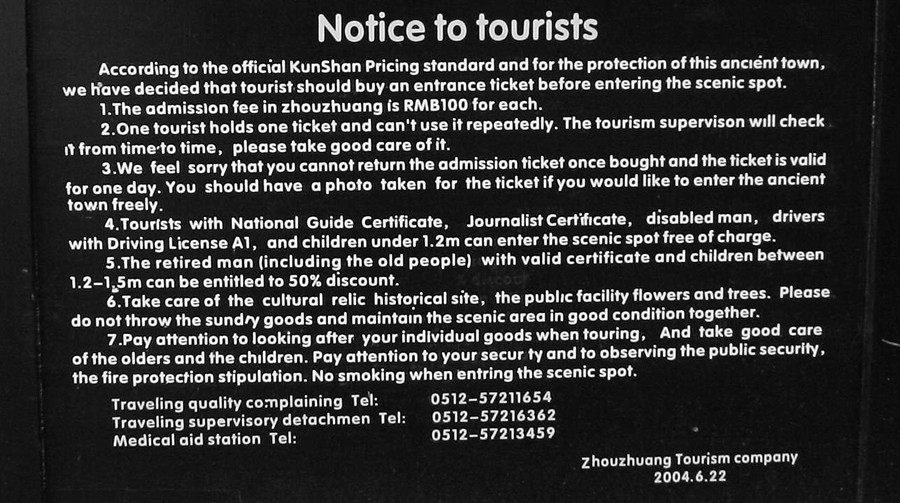
Mmm! Almost as appetizing as the "hot pig intestines food" offered at the same establishment:

And this one, I couldn't figure out:
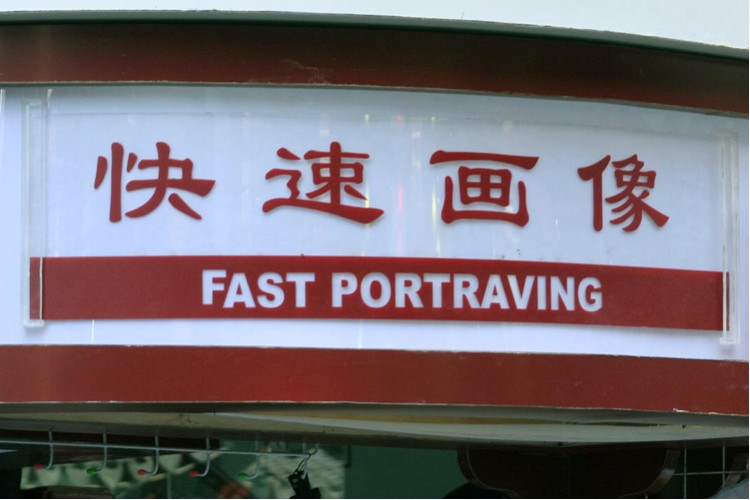
Update: An academic explanation (NSFW) of why this might be happening. Oh, the poor cabbage.
Before going to Shanghai, I picked up James Fallows's Postcards from Tomorrow Square, a collection of his essays from living there 2006-2009. (Yes, he lived in the building that houses the hotel where our CCMBA cohort stayed.)
First, I'd like to call attention to page 76:
The easier America makes it for talented foreigners to work and study there, the richer, more powerful, and more respected America will be. America's ability to absorb the world's talent is the crucial advantage no other culture can match—as long as America doesn't forfeit this advantage with visa rules written mainly out of fear.
Second, the book should be required of CCMBA students visiting Shanghai to complement Travels of a T-Shirt in a Global Economy, which we had to read for our Global Markets and Institutions (GMI) class. In the essay "China Makes, the World Takes" (available at The Atlantic.com in shorter form), Fallows looks at the Chinese side of Livoli's traveling t-shirt. Computer accessories, for instance:
The other facility that intrigued me, one of Liam Casey’s in Shenzhen, handled online orders for a different well-known American company. I was there around dawn, which was crunch time. Because of the 12-hour time difference from the U.S. East Coast, orders Americans place in the late afternoon arrive in China in the dead of night. As I watched, a customer in Palatine, Illinois, perhaps shopping from his office, clicked on the American company’s Web site to order two $25 accessories. A few seconds later, the order appeared on the screen 12,500 km away in Shenzhen. It automatically generated a packing and address slip and several bar-code labels. One young woman put the address label on a brown cardboard shipping box and the packing slip inside. The box moved down a conveyer belt to another woman working a “pick to light” system: She stood in front of a kind of cupboard with a separate open-fronted bin for each item customers might order from the Web site; a light turned on over each bin holding a part specified in the latest order. She picked the item out of that bin, ran it past a scanner that checked its number (and signaled the light to go off), and put it in the box. More check-weighing and rescanning followed, and when the box was sealed, young men added it to a shipping pallet.
By the time the night shift was ready to leave—8 a.m. China time, 7 p.m. in Palatine, 8 p.m. on the U.S. East Coast—the volume of orders from America was tapering off. More important, the FedEx pickup time was drawing near. At 9 a.m. couriers would arrive and rush the pallets to the Hong Kong airport. The FedEx flight to Anchorage would leave by 6 p.m., and when it got there, the goods on this company’s pallets would be combined with other Chinese exports and re-sorted for destinations in America. Forty-eight hours after the man in Palatine clicked “Buy it now!” on his computer, the item showed up at his door. Its return address was a company warehouse in the United States; a small Made in China label was on the bottom of the box.
Finally, a bleg: what book or books do you think, dear reader, should be required reading for visitors to your city? For example, I'd say Nelson Algren's prose-poem City on the Make and Mike Royko's Boss for Chicago. Thoughts?